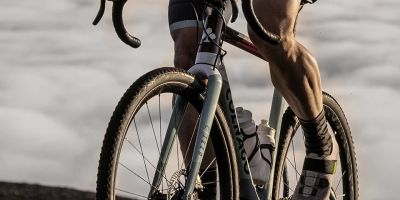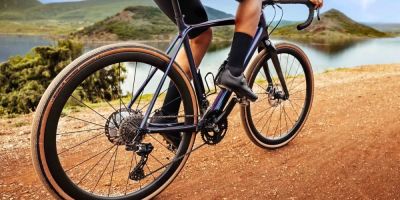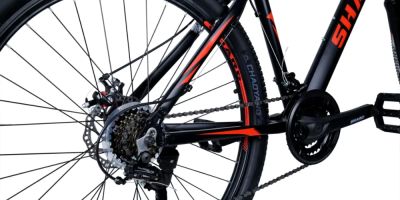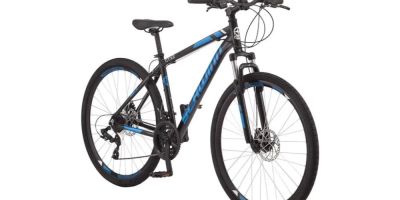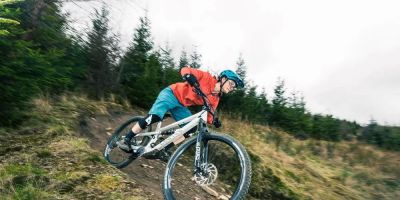Mastering Mountain Biking in Snow: Tips and Techniques
1. Embrace the Challenge: Riding Your Mountain Bike in Snow
There’s something exhilarating about riding your mountain bike in snow. The crisp, cold air, the quiet blanket of snow around you, and the challenge of navigating slippery terrain make it an adventure like no other. I remember the first time I tried mountain biking in snowy conditions. I was nervous but excited, unsure of what to expect. Would my tires slip out from under me? How would my bike handle the snow and ice? But once I got the hang of it, I realized that riding a mountain bike in the snow is one of the most rewarding experiences you can have on two wheels.
Mountain biking in snow conditions requires a bit more preparation and skill compared to your usual trail rides. Snow can make even familiar routes feel like a new challenge, but with the right techniques and equipment, you can navigate snowy terrain safely and effectively. In this guide, I’ll share what I’ve learned about riding mountain bikes in the snow, including tips on gear, techniques, and how to enjoy this winter adventure.

Conte's Bike Shop
3449 Wilson Blvd, Arlington, VA 22201, USA
2. Preparing Your Bike for Snowy Terrain
Before you even hit the snow-covered trails, it’s essential to make sure your mountain bike is properly prepared for the conditions. Over the years, I’ve learned that having the right setup can make all the difference between a fun ride and a frustrating one.

Bicycle Barn LLC
839 Reading Rd, East Earl, PA 17519, USA
2.1. Choosing the Right Tires
One of the most important factors when mountain biking in snow is your tires. Regular tires just won’t cut it when you’re riding in deep snow, ice, or slush. I learned this lesson the hard way on my first snowy ride when I found myself slipping all over the place. That’s when I discovered fat bike tires. These tires are wider than standard mountain bike tires, providing more surface area, which helps distribute your weight more evenly on the snow and prevents you from sinking too deep into it.
If you don’t have a fat bike, consider using tires with aggressive tread patterns that can bite into the snow, providing better traction. Some riders also add studs to their tires to increase grip on icy surfaces. Personally, I found that using fat tires gave me the most stability in snowy conditions, and I could ride with confidence even when the snow was deep.
2.2. Lowering Tire Pressure
Another important tip I’ve picked up is to lower the tire pressure. By reducing the pressure, you allow the tires to “float” more on top of the snow, rather than digging in and getting stuck. The lower pressure gives the tires more surface contact with the snow, which improves traction and reduces the chances of getting bogged down. I typically lower the pressure to around 10-15 PSI, but you may need to experiment to find what works best for you.
2.3. Checking Your Bike’s Lubrication and Chain
Snow and ice can be tough on your bike’s components, so it’s essential to check your bike’s lubrication before heading out. Cold temperatures can cause grease and oil to harden, making it harder for your bike’s parts to function smoothly. Before riding in snowy conditions, I always make sure to apply a lubricant that is specifically designed for winter conditions to prevent rust and ensure smooth gear shifting.
3. Riding Techniques for Snowy Trails
Once you’ve got your bike set up, it’s time to hit the trails! But before you rush into the snow, there are some key riding techniques to keep in mind to ensure a safe and enjoyable experience.
3.1. Maintain a Steady, Controlled Speed
One of the first things I learned when riding in snow is the importance of maintaining a steady, controlled speed. When the ground is slippery, it’s easy to lose control if you’re going too fast. Instead, I focus on riding at a slower pace, staying light on the pedals and keeping my body weight centered over the bike. This helps with balance and prevents my tires from sliding out from underneath me. It also gives me more time to react to changes in the terrain, such as hidden icy patches or sudden snow drifts.
3.2. Keep Your Pedals Level and Your Body Relaxed
Another key to snow biking is body positioning. I’ve found that it’s crucial to keep my pedals level, especially when riding through deeper snow. If the pedals are tilted, it can make it harder to maintain balance. I also keep my body relaxed and my grip loose, allowing the bike to move more fluidly beneath me. This helps me adjust quickly to changes in the snow conditions and improves my overall handling.
3.3. Use Your Body to Help Navigate the Terrain
Snowy trails can be uneven, with pockets of soft snow and hard, icy patches. To stay balanced and in control, I use my body to help guide the bike through tricky sections. When I approach a soft snow section, I shift my weight back slightly to prevent the front wheel from digging too deep. For icy sections, I make small, smooth adjustments with the handlebars to avoid sudden jerks, which can cause the bike to slide. Over time, I’ve learned to feel the bike’s movements and make adjustments based on the conditions beneath me.
4. What to Wear for Mountain Biking in Snow
Mountain biking in snow can be physically demanding, so it’s important to dress appropriately for the conditions. Staying warm, dry, and comfortable is key to having a good time in the snow.
4.1. Layering is Key
I always wear layers when riding in snow. The weather can change quickly, and layering gives me the flexibility to add or remove clothing as needed. I start with a moisture-wicking base layer to keep sweat away from my skin, followed by an insulating mid-layer and a waterproof outer layer to protect against snow and wind. I also wear waterproof gloves to keep my hands warm and dry, and I always use thermal socks to prevent cold toes.
4.2. Protective Gear
While riding in the snow can be exhilarating, it can also be risky, especially on icy patches. I’ve found that wearing additional protective gear like knee pads and elbow pads gives me peace of mind when navigating tricky areas. A helmet is, of course, essential for any biking activity, and it’s especially important in snowy conditions where the terrain can be unpredictable.
5. Best Locations for Mountain Biking in Snow
If you’re looking to take your snow biking adventure to the next level, there are a few places in the U.S. that are known for their incredible winter biking trails. I’ve been fortunate enough to ride in several of these locations, and each offers its own unique challenges and breathtaking views.
5.1. Winter Park, Colorado
Winter Park is one of the top destinations for mountain biking in snow, with dedicated winter trails that are groomed specifically for fat biking. The area offers a variety of trails, from beginner to advanced, making it perfect for riders of all skill levels. I’ve had the pleasure of riding here, and the trails are always well-maintained, with beautiful mountain views and a welcoming community of fellow riders.
5.2. Teton Pass, Wyoming
Teton Pass in Wyoming is another great spot for snow biking. The area offers stunning views of the Teton Mountains and has some incredible trails for riders who enjoy a challenge. The snow-covered terrain can be tricky at times, but the experience of riding in such a beautiful setting makes it all worth it.
5.3. Mount Hood, Oregon
Mount Hood offers some of the best snow biking conditions in the Pacific Northwest. The snow trails here are diverse, ranging from flat, winding paths to more technical, uphill climbs. The area is known for its picturesque scenery and friendly biking community, and it’s one of my favorite places to ride during the winter months.
6. Conclusion: Snow Biking Is an Adventure Like No Other
Mountain biking in snow conditions offers a unique and exciting challenge that’s both physically rewarding and mentally refreshing. With the right bike setup, gear, and techniques, you can enjoy the thrill of riding through snow-covered trails while staying safe and comfortable. I highly recommend giving snow biking a try—it’s an experience like no other, and once you get the hang of it, you’ll find it to be one of the most exhilarating ways to ride in the winter.
If you’re looking for the best gear and bikes for snow conditions, check out Healthy Cycling. They offer a variety of bikes and accessories that will make your winter biking experience even better. Don’t let the snow keep you indoors—get out and ride!

